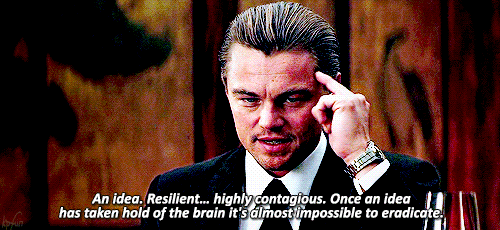In episode 101, I put forth a provocative analogy for toxic shame that I think captures the slippery and insidious way that it spreads from one generation to another. I see toxic shame as operating like an unconscious viral meme. The thought experiment goes like this: imagine that as a child, you were hypnotized by someone you loved and trusted, or someone who had power and influence over you. While you were hypnotized, this person implanted an idea in your head (kind of like the film Inception). And that idea was that there is something deeply wrong with you!
They may not even have specified what was wrong with you, they just left you with this strong belief that you were flawed. And then they took it even further than that. They hypnotized you to hypnotize other people too. Whenever something reminds you of this belief that there’s something wrong with you, you were instructed to try to hypnotize the people around you, the people you love, the people you have power over, in order to implant the exact same idea in their heads as well! This is how the memetic virus spreads.
Last but not least, this person hypnotized you to forget that you’d ever been hypnotized at all. And to forget whenever you hypnotize anyone else (just as they themselves have been hypnotized to forget that they’ve hypnotized you).
And so from that moment onward, you not only had this idea stuck in your head that you were flawed, but since the hypnosis itself was forgotten by all the parties involved, you actually believed that it was your genuine opinion that you were flawed, that you had decided to believe that based entirely on your own logic and volition. And whenever that belief was triggered, you unconsciously spread this hypnotic virus to anyone around you that you had power over. And they did the same, and on and on it went.

While this isn’t a perfect analogy, I think it’s a pretty close approximation of how toxic shame functions. Toxic shame begins in childhood whenever our caregivers, or the adults in power over us, do something to break the connection between us and them, usually triggered by their own shame. Because we are children at the time, we are in an egocentric stage of development, which means that we will naturally fault ourselves for these ruptures, even though as children we aren’t morally, legally, or mentally responsible. So we essentially have no choice but to blame ourselves for the emotional reactions of our caregivers, which wires a belief into our heads that there must be something wrong with us (because we can’t fathom that there might be something wrong with these adults who we depend on for our very survival).
Unless these ruptures are noticed and repaired by our caregivers, this wiring will crystalize and carry with us into adulthood. From there, we will unwittingly recreate this exact same pattern of disconnection whenever our shame gets triggered, thus spreading our toxic shame onto our own children and anyone else who happens to be under our power. In this way, toxic shame is an unconscious viral meme that gets passed from generation to generation.
But there’s hope! If we can spot the pattern, we can break the cycle. To that end, I have put together a 4-week online cohort course starting in August that aims to illuminate how this pattern lives in all of us so that we can notice it, own it, and begin to heal it.



